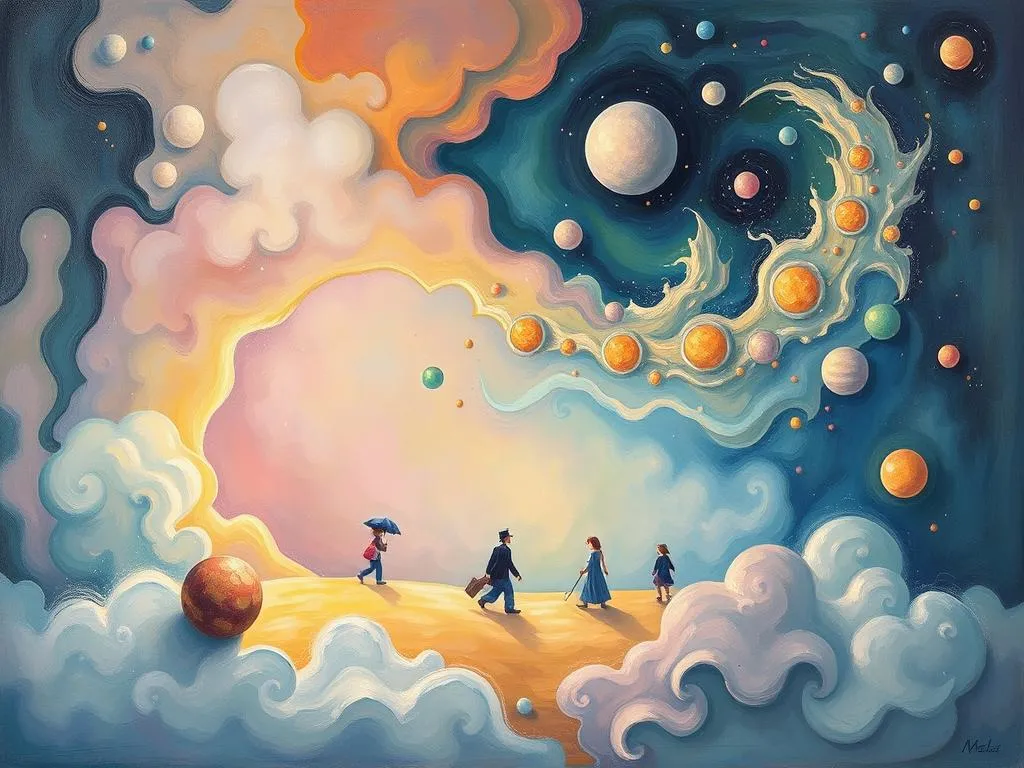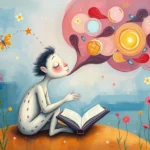
Introduction
Dreams have long fascinated humanity, serving as a canvas where the subconscious mind paints its most vivid thoughts, fears, and desires. Among the myriad of dreams that people experience, the compound dream stands out as particularly intriguing. What exactly is a compound dream? It is a multifaceted dream that weaves together various themes, emotions, and symbols, creating a rich tapestry that can reveal a lot about our inner world. The complexity of these dreams often leaves individuals pondering their meanings, sparking curiosity about how they connect to waking life. In this article, we will delve into the symbolism and meaning behind compound dreams, explore key scenarios and variations, and provide insights on how to connect these dreams to real-life situations.
Symbolism and Meaning
At the heart of understanding compound dreams lies the analysis of common symbols that emerge within them. These symbols can vary widely based on personal experiences, cultural background, and emotional state. For instance, a compound dream may include elements such as houses, water, and vehicles, each carrying its own unique significance.
Houses, often a prominent symbol in dreams, represent the self or the mind. Different rooms can signify various aspects of one’s personality or life experiences. In a compound dream, if a person finds themselves moving through multiple houses, it might indicate exploration of different facets of their identity or a transition in their life journey.
Water is another potent symbol that frequently appears in dreams. It embodies emotions and the subconscious. The state of the water—calm, turbulent, or murky—can reflect the dreamer’s emotional state. In the context of a compound dream, water can signify a merging of various emotional experiences, suggesting that the dreamer is navigating complex feelings or situations.
Vehicles in dreams typically symbolize the direction in which one is heading in life. They can represent personal agency, control, and the journey itself. In a compound dream, a dreamer might find themselves in different types of vehicles—each representing a different path or choice in their waking life. The type of vehicle and its condition can offer insights into how the dreamer feels about their current life choices.
Moreover, the combination of these symbols can create layered meanings. For example, a dreamer who travels through a series of houses, experiences turbulent waters, and drives various vehicles may be processing a significant life change or emotional upheaval. The interplay of these symbols invites the dreamer to reflect on their current circumstances and emotions.
Interpretations can also shift based on personal perspectives. For one individual, a house may represent security, while for another, it may symbolize confinement. It’s essential to consider one’s emotional associations with each symbol. Engaging in personal reflection can help clarify the meanings embedded in a compound dream, allowing for a richer understanding of its significance.
Key Scenarios and Variations
Compound dreams can manifest in numerous scenarios, each variation offering a different lens through which to interpret the dream. One common scenario involves being chased. When a dreamer experiences this in a compound format, various elements may come into play, such as the chaser, the environment, and the dreamer’s emotional state. This chase can symbolize avoidance of responsibilities or fears, while the environment—whether it be a familiar neighborhood or an unfamiliar terrain—can indicate the context of the dreamer’s waking life.
Another variation might include loss or abandonment. If a dreamer finds themselves in a compound dream where they are searching for lost items or people, this can reflect feelings of insecurity or a longing for connection. The nature of what is lost and the emotions felt during the search can provide insight into the dreamer’s current emotional landscape. For instance, losing a beloved pet in a dream might symbolize fear of losing comfort or companionship in waking life.
Transformation is yet another prevalent theme in compound dreams. A dreamer may experience a series of transformations—changing into animals, different versions of themselves, or even into objects. This transformation can signify personal growth or a shift in perspective. The nature of the transformations and the feelings associated with them can help illuminate the dreamer’s journey toward self-discovery or change.
Certain scenarios may also involve journeys or travel. For instance, a dreamer may find themselves on a winding road that leads through various landscapes, signifying a journey through different life phases or emotional states. The changing scenery can reflect the dreamer’s current experiences, fears, or aspirations, while the vehicle they are in can indicate their level of control over their life’s direction.
Ultimately, the key to deciphering these scenarios lies in the feelings and emotions they evoke in the dreamer. Reflections on these emotions can unveil personal truths and reveal what aspects of life require attention or adjustment.
Real-Life Connections and Takeaways
Connecting compound dreams to real-life situations can be a profound exercise in self-reflection. Understanding that dreams often serve as mirrors to our waking lives can empower individuals to delve deeper into their emotional landscapes. When interpreting a dream, it’s valuable to consider how its themes resonate with current life challenges or experiences.
For instance, if a compound dream revolves around themes of conflict or tension, it may signify unresolved issues in personal relationships or professional settings. By identifying specific elements in the dream, such as who is involved and the nature of the conflict, a dreamer can gain insights into how to address these tensions in their waking life.
Furthermore, practical advice for self-reflection includes keeping a dream journal. Writing down dreams immediately upon waking allows for better recollection and analysis of symbols, emotions, and scenarios. Over time, patterns may emerge, revealing recurring themes that can provide clarity about underlying concerns or aspirations.
Encouraging readers to engage in mindfulness practices can also enhance dream interpretation. Techniques such as meditation or deep breathing can help individuals connect with their inner selves, making it easier to decode the messages in their dreams. Reflecting on questions such as “What emotions did I feel during the dream?” or “How does this dream relate to my current life situation?” can lead to deeper understanding.
Additionally, seeking feedback from trusted friends or therapists can offer fresh perspectives on the meanings behind one’s dreams. Discussing dreams with others can provide insights that the dreamer may not have considered and can facilitate meaningful conversations about personal growth and emotional well-being.
Ultimately, the journey of understanding compound dreams is highly personal. Each dream acts as a unique guide, inviting the dreamer to explore their inner thoughts, fears, and desires. Whether a dreamer finds themselves navigating complex emotions, facing significant life changes, or exploring different facets of their identity, the key takeaway lies in the power of self-reflection. By embracing the messages embedded in dreams, individuals can foster personal growth, gain clarity, and embark on a journey of self-discovery.
In conclusion, compound dreams offer a rich tapestry of symbolism and meaning. By analyzing common symbols, exploring key scenarios, and connecting dream experiences to real-life situations, individuals can unlock valuable insights into their emotional landscapes. Encouraging personal reflection and fostering awareness of the messages within dreams can pave the way for deeper understanding and growth. As we continue to explore the world of dreams, let us embrace the opportunity to connect with our inner selves and uncover the profound wisdom that lies within.







